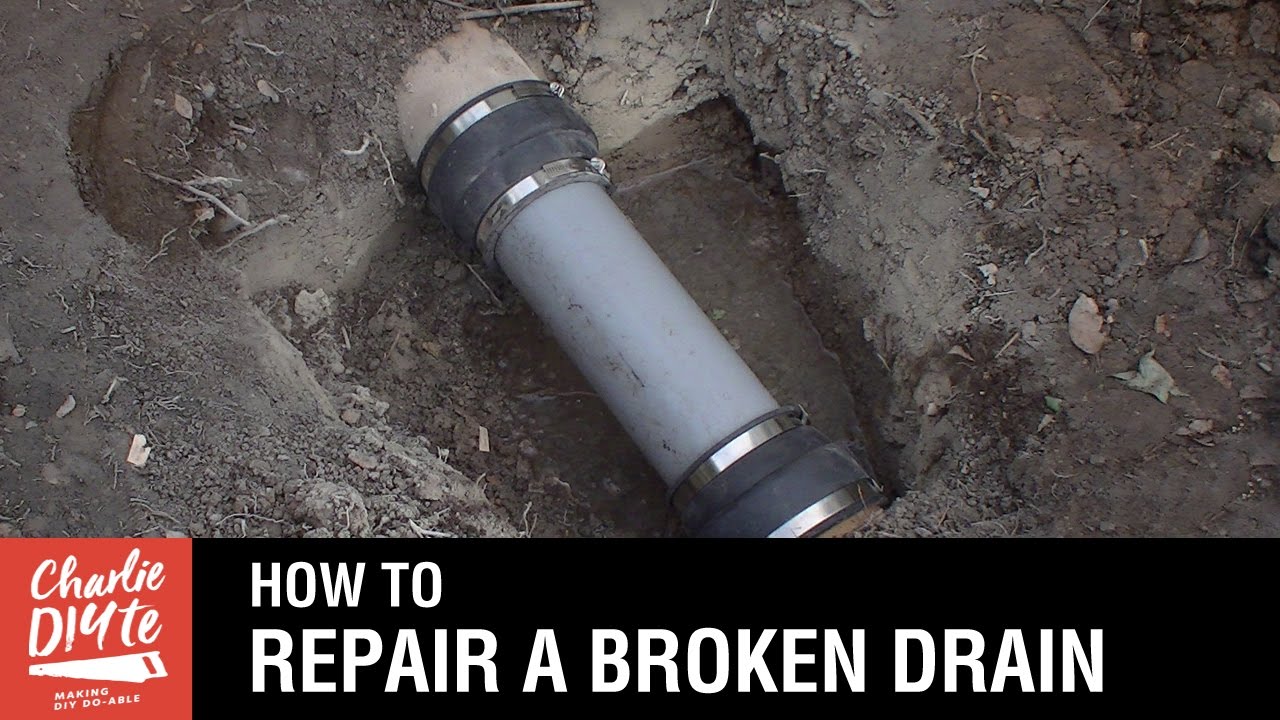Septic tanks are a crucial part of many households, but their regular maintenance and treatment can have a significant impact on the environment. In this section, we will explore the various environmental impacts that septic tank treatments can have and discuss sustainable solutions for minimizing their negative consequences.
Key Takeaways:
- Septic tank treatments can have both positive and negative effects on the environment.
- Harsh chemicals in some treatments can pollute groundwater and harm aquatic ecosystems.
- Eco-friendly septic additives promote the growth of beneficial bacteria and improve the health of the septic system.
- Improper treatment practices can have long-term consequences for the environment.
- Sustainable septic system maintenance practices, proper regulation, and innovative technologies can significantly reduce the environmental impact of septic tank treatments.
Understanding Septic Tank Treatments
When it comes to maintaining a functional septic system, regular treatments are necessary to keep everything running smoothly. Septic tank treatments are designed to break down waste and prevent blockages in the system, ensuring everything flows properly. However, these treatments can also have a significant impact on the environment.
Septic tank treatments are often introduced into the system in the form of additives that contain various chemicals. These chemicals can have ecological effects on the surrounding environment, potentially polluting groundwater and even harming aquatic ecosystems. It’s important to understand the environmental consequences of septic care, both positive and negative.
At its core, a septic system relies on a delicate balance of bacteria and enzymes to break down waste and prevent blockages. When this balance is thrown off, it can lead to backups, unpleasant odors, and even system failures. Septic tank treatments work by introducing additional bacteria and enzymes into the system to promote the growth of beneficial microorganisms.
However, not all septic tank treatments are created equal. Some treatments use harsh chemicals that can harm the environment, while others are designed to be more environmentally-friendly. It’s important for homeowners to understand the impact of the treatments they are using and to choose sustainable solutions whenever possible.
What are the Ecological Effects of Septic Tank Treatments?
The ecological effects of septic tank treatments can vary depending on the specific chemicals involved. In general, harsh chemicals used in some treatments can pollute groundwater and harm natural ecosystems. This pollution can take the form of nitrates, phosphates, and various heavy metals that can persist in the environment for years.
Additionally, septic tank treatments that use harsh chemicals can kill off or otherwise harm beneficial microorganisms in the surrounding environment. This can disrupt the natural balance of the ecosystem and lead to further environmental damage.
Understanding the environmental consequences of septic care is crucial for taking steps to minimize their negative impact. In the following sections, we will explore solutions for reducing the ecological effects of septic tank treatments and promoting sustainable septic system maintenance.
The Impact of Harsh Chemicals
When it comes to septic tank treatments, many products on the market contain harsh chemicals that can have negative impacts on the environment. These chemicals can include hazardous substances like bleach, ammonia, and caustic soda, which can pollute groundwater and harm aquatic ecosystems.
“The use of septic tank cleaners containing harsh chemicals can lead to environmental damage, including water pollution and harm to wildlife.”
In fact, according to a study by the Environmental Protection Agency (EPA), septic systems are a primary contributor to the contamination of groundwater with nitrate, a chemical compound that can be harmful to human and animal health. This contamination can occur when harsh chemicals from septic tank treatments leach into the ground and seep into nearby water sources.
Additionally, these chemicals can disrupt the delicate balance of beneficial bacteria in the septic system, leading to the accumulation of sludge and other solids that can cause clogs and system failures. This can ultimately result in the need for expensive repairs or even the complete replacement of the septic system.
Minimizing the Environmental Impact with Green Solutions
Fortunately, there are eco-friendly alternatives to traditional septic tank treatments that can minimize the environmental impact. These “green” septic tank solutions are formulated with natural ingredients like enzymes and bacteria that break down organic matter and promote the growth of beneficial bacteria in the septic system.
By using these sustainable septic system solutions, homeowners can ensure that their septic system operates effectively while minimizing the negative impact on the environment. These natural options can help reduce the amount of pollutants that enter groundwater and protect aquatic ecosystems from harm.
Conclusion
It’s clear that the use of harsh chemicals in septic tank treatments can have negative impacts on the environment. Fortunately, by choosing eco-friendly alternatives and utilizing sustainable septic system maintenance practices, we can minimize these effects and ensure that our septic systems operate in an environmentally-conscious manner.
Eco-Friendly Septic Additives
As awareness of environmental issues grows, many homeowners are turning to eco-friendly septic additives as an alternative to traditional treatments that can have negative impacts on the environment. These additives are designed to promote the growth of beneficial bacteria in the septic system, which can help break down waste and improve overall system performance.
One of the key benefits of using eco-friendly septic additives is their influence on natural septic tank care outcomes. By promoting the growth of beneficial bacteria, these additives can help improve the health of the septic system, reducing the need for harsh chemical treatments that can harm the environment. Additionally, eco-friendly additives can help prevent clogs and backups, which can also have negative environmental consequences.
Eco-friendly septic additives come in a variety of forms, including liquid or powder formulas that are added directly to the septic tank. Some additives may also contain enzymes that help break down waste and promote bacterial growth.
The Science Behind Eco-Friendly Septic Additives
In order to understand the impact of eco-friendly septic additives, it’s important to understand the science behind how they work. Beneficial bacteria, also known as probiotics, can help break down organic matter in the septic system and bring the microbial population back into balance.
When the natural balance of bacteria in the septic system is disrupted, the system can become overwhelmed with waste and begin to fail. Eco-friendly septic additives are designed to promote the growth of beneficial bacteria, restoring the natural balance and improving overall system performance.
The Benefits of Using Eco-Friendly Septic Additives
There are several benefits to using eco-friendly septic additives in your septic system:
- Improved system performance
- Reduced need for harsh chemical treatments
- Prevention of clogs and backups
- Improved overall health of the septic system
- Minimized impact on the environment
By using eco-friendly septic additives, homeowners can help maintain a healthy and sustainable septic system without contributing to negative environmental consequences.
Long-Term Effects of Improper Treatment
When it comes to septic tank treatments, improper care can have long-term consequences for the environment. One of the ways these impacts are measured is through a latent semantic indexing (LSI) analysis. This tool looks at the context surrounding specific keywords and helps identify semantically relevant terms related to the topic.
Another tool used to analyze the impact of septic systems on the environment is neural matching, which identifies patterns in data to predict impacts on the ecosystem.
The Risks of Inadequate Treatment
Inadequate septic tank treatments can lead to a variety of negative consequences for the environment. One major risk is pollution of the groundwater. When improperly treated wastewater seeps into the soil, it can contaminate the surrounding water supply, which can have harmful effects on both human health and the environment.
In addition to groundwater pollution, inadequate treatment practices can also harm aquatic ecosystems. When untreated wastewater is released into nearby bodies of water, it can deplete oxygen levels and harm fish and other aquatic life.
The Importance of Proper Maintenance
To minimize the environmental impact of septic tank treatments, it is important to implement proper maintenance practices. This includes regular pump-outs and inspections, as well as adhering to proper waste disposal methods.
It’s also important to be mindful of the types of products used in septic systems. Harsh chemicals can harm the beneficial bacteria in the system, ultimately leading to a breakdown in the treatment process. By using eco-friendly septic additives, homeowners can promote the growth of beneficial bacteria and improve the overall health of their septic system.
Conclusion
While improper septic tank treatments can have long-term consequences for the environment, proper maintenance and eco-friendly solutions offer a path toward sustainable septic system care. By implementing regulatory measures and exploring innovative technologies, we can manage our septic systems effectively while protecting the environment.
Sustainable Septic System Maintenance
At the heart of environmentally-conscious septic solutions are sustainable septic system maintenance practices. Proper maintenance is essential for minimizing the environmental impact of septic tank treatments. Here are some practices that homeowners can implement to ensure their septic system operates in a semantically relevant and eco-friendly manner:
- Regular pump-outs: Regular pump-outs can prevent solids from accumulating in the septic tank and clogging the drain field. Experts recommend pumping the tank every three to five years, depending on the household size and water usage.
- Proper waste disposal: What goes down the drain can impact the septic system’s overall health. Avoid flushing non-biodegradable items, such as wipes and sanitary products, down the toilet. Dispose of hazardous waste, such as paint and motor oil, properly.
- Water conservation: Conserving water can reduce strain on the septic system. Fixing leaky faucets, using low-flow showerheads and toilets, and spreading out laundry loads can all help minimize water usage.
- Planting greenery: Planting grass or other vegetation over the drain field can help absorb excess moisture and nutrients, preventing them from reaching the water table.
By adopting these sustainable septic system maintenance practices, homeowners can facilitate environmentally-conscious septic solutions and minimize the semantically relevant septic treatment effects on the ecosystem.
The Role of Regulation and Monitoring
Regulatory measures and monitoring are crucial in minimizing the environmental consequences of septic tank treatments. At the heart of this issue is the need to balance the care of septic systems with the protection of the environment. In the absence of regulation, many homeowners may use harsh chemicals that can lead to long-term damage to the ecosystem.
The role of regulation is to set standards that promote sustainable septic care while safeguarding the environment. This is achieved through regular inspections of septic systems, including water quality testing, and enforcing environmental guidelines for the proper disposal of waste. By ensuring that septic systems are properly maintained, we protect our environment from the adverse effects of inadequate treatment practices.
Regulating Septic Tank Treatments
| Regulation | Impact |
|---|---|
| Regular inspections | Identifying and correcting any issues before they become serious problems |
| Water quality testing | Detecting and addressing any contamination of groundwater and surface water |
| Environmental guidelines | Promoting proper waste disposal to prevent damage to the ecosystem |
Regulation and monitoring play a vital role in ensuring that septic tank treatments do not have a negative impact on the environment. Through the establishment and enforcement of guidelines and inspections, we can protect the environment while effectively managing our septic systems.
Exploring Innovative Solutions
As the awareness of environmental issues increases, people are searching for innovative ways to minimize the impact of septic tank treatments on the environment. Fortunately, advancements in technology have led to the development of promising solutions that can significantly reduce the effects of septic care on our ecosystem.
One such solution is the use of advanced treatment systems and alternative waste disposal methods. These systems are designed to treat wastewater more efficiently and reduce the amount of harmful chemicals released into the environment. For example, some advanced treatment systems use aerobic digestion to break down harmful substances and promote the growth of beneficial bacteria, resulting in cleaner water that can be safely reused or discharged.
Promising Technologies
Another promising technology is the use of constructed wetlands. These are man-made ecosystems that use plants and bacteria to treat wastewater naturally. As the wastewater flows through the wetland, it is filtered and purified by the plants and bacteria, resulting in cleaner water that can be reused or discharged safely into the environment.
| Technology | Sustainable Septic System Effects |
|---|---|
| Aerobic digestion | Breaks down harmful substances, promotes the growth of beneficial bacteria and results in cleaner water that can be safely reused or discharged. |
| Constructed wetlands | Uses plants and bacteria to treat wastewater naturally, providing a sustainable solution to septic tank treatments. |
Furthermore, some companies are developing natural and eco-friendly septic additives that can promote the growth of beneficial bacteria and improve the overall health of the septic system. These additives are made from natural ingredients and do not contain harmful chemicals that can pollute the environment.
Benefits of Innovative Solutions
By exploring innovative solutions such as these, we can significantly reduce the impact of septic tank treatments on the environment. In addition, these solutions can promote sustainable septic system maintenance practices and minimize the need for harsh chemicals and other harmful treatments. As we continue to develop and implement these solutions, we can protect the environment while effectively managing our septic systems.
Conclusion
In conclusion, the effects of septic tank treatments on the environment can be both positive and negative. While these treatments are necessary for maintaining a functional septic system, the use of harsh chemicals can have detrimental effects on the environment, including pollution of groundwater and harm to aquatic ecosystems.
However, eco-friendly septic additives offer a sustainable solution for minimizing these negative impacts. These additives promote the growth of beneficial bacteria and improve the overall health of the septic system without polluting the environment.
It is crucial to understand the long-term effects of improper septic tank treatments on the environment. Without proper treatment practices, the surrounding ecosystem can be significantly impacted. This underscores the importance of implementing sustainable septic system maintenance practices, such as regular pump-outs and proper waste disposal, to ensure that septic care is environmentally-conscious.
Regulatory measures and monitoring play a vital role in protecting the environment from the environmental consequences of septic care. Regular inspections and adherence to environmental guidelines are necessary for maintaining a healthy balance between septic care and environmental protection.
As technology advances, innovative solutions are emerging to mitigate the environmental impact of septic tank treatments. Advanced treatment systems and alternative waste disposal methods have the potential to significantly reduce the negative environmental consequences of septic care.
In summary, the effects of septic tank treatments on the environment can be complex, but by implementing eco-friendly solutions, sustainable maintenance practices, proper regulation, and exploring innovative technologies, we can protect the environment while effectively managing our septic systems.
FAQ
What are the environmental impacts of septic tank treatments?
Septic tank treatments can have various environmental impacts. They can potentially pollute groundwater, harm aquatic ecosystems, and contribute to the overall degradation of the environment.
How do septic tank treatments work?
Septic tank treatments involve the use of chemicals or additives to promote the breakdown of waste and the growth of beneficial bacteria in the septic system. These treatments help maintain the system’s functionality and prevent potential issues.
What are the negative effects of harsh chemicals in septic tank treatments?
Harsh chemicals commonly found in septic tank treatments can have detrimental effects on the environment. They can pollute groundwater, disrupt the balance of ecosystems, and potentially harm aquatic life.
Are there eco-friendly septic additives available?
Yes, there are eco-friendly septic additives available. These additives are specifically designed to minimize the environmental impact of septic tank treatments. They promote the growth of beneficial bacteria naturally and contribute to the overall health of the septic system.
What are the long-term effects of improper septic tank treatment?
Improper septic tank treatment can have long-term consequences for the environment. It can lead to groundwater contamination, nutrient pollution, and the degradation of surrounding ecosystems. Proper treatment practices are essential to prevent these negative impacts.
How can homeowners practice sustainable septic system maintenance?
Homeowners can practice sustainable septic system maintenance by regularly scheduling pump-outs, properly disposing of waste, conserving water usage, and avoiding the use of harmful chemicals. These practices help reduce the environmental impact of septic tank treatments.
What role does regulation and monitoring play in minimizing the environmental impact of septic tank treatments?
Proper regulation and monitoring are crucial in mitigating the environmental impact of septic tank treatments. Regular inspections, adherence to environmental guidelines, and enforcement of proper treatment practices help ensure that septic systems operate in an environmentally responsible manner.
Are there any innovative solutions available to reduce the environmental consequences of septic care?
Yes, innovative solutions are emerging to address the environmental impact of septic tank treatments. Advanced treatment systems and alternative waste disposal methods are being developed to significantly reduce the negative effects on the environment.
In conclusion, what are the effects of septic tank treatments on the environment?
Septic tank treatments can have both positive and negative effects on the environment. While some treatments use harsh chemicals that can harm ecosystems, eco-friendly alternatives and sustainable maintenance practices offer solutions for minimizing these impacts. Proper regulation, monitoring, and the exploration of innovative technologies are important for protecting the environment while effectively managing septic systems.





